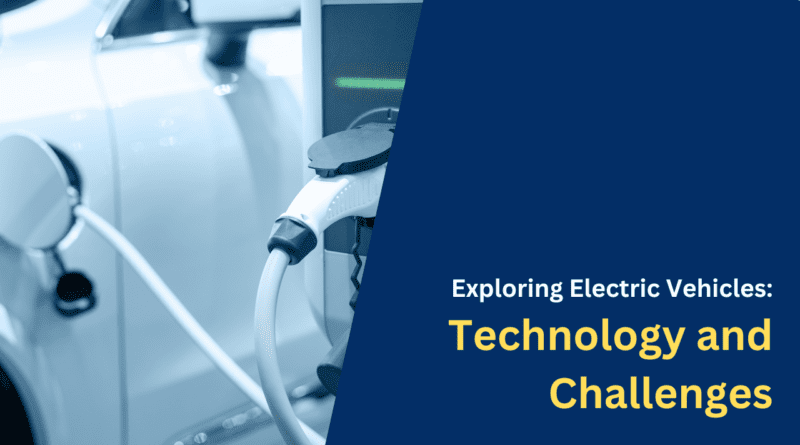Exploring Electric Vehicles: Technology and Challenges
Hello, guys, welcome to our blog. Here in this article, we will discuss electric vehicle technologies and the challenges faced in the EV industry.
Ask questions if you have any electrical, electronics, or computer science doubts. You can also catch me on Instagram – CS Electrical & Electronics.
Also, read:
- Top 10 High-Paying Electrical And Electronics Jobs In 2023, 2024
- Top 200+ MATLAB Simulink Interview Questions With Answers
- 100 (AI) Artificial Intelligence Applications In The Automotive Industry
Electric Vehicles: Technology and Challenges
Exploring electric vehicles (EVs) marks a significant stride towards a more sustainable and environmentally conscious transportation future. Unlike traditional internal combustion engine vehicles, EVs are powered by electricity stored in rechargeable batteries, eliminating tailpipe emissions and reducing the carbon footprint associated with conventional automobiles. The exploration of electric vehicles is driven by a confluence of factors, with environmental concerns, advancements in technology, and the pursuit of energy efficiency playing pivotal roles.
One of the primary motivations behind the exploration of EVs is the urgent need to address the environmental impact of traditional vehicles. The transportation sector is a major contributor to air pollution and greenhouse gas emissions. EVs offer a cleaner alternative, promoting a shift towards a low-carbon transportation system. As the global community grapples with the challenges of climate change, the adoption of electric vehicles emerges as a tangible solution to mitigate the environmental impact of transportation.
Technological advancements have been a key enabler in making electric vehicles more practical and accessible. Improvements in battery technology, energy density, and charging infrastructure have extended the range of EVs, reduced charging times, and enhanced overall performance. The exploration of electric vehicles is thus intertwined with ongoing innovations that continually make EVs more efficient, cost-effective, and appealing to a broader range of consumers.
Government incentives, policy support, and the commitment to sustainable practices have also fueled the exploration of electric vehicles. Many countries are implementing initiatives to incentivize the adoption of EVs, including tax credits, subsidies, and the development of charging infrastructure. These efforts create a conducive environment for consumers, businesses, and manufacturers to embrace electric vehicles as a viable and attractive option.
Moreover, the exploration of electric vehicles aligns with a broader vision of transitioning towards a renewable energy future. As the electricity grid incorporates more renewable sources such as solar and wind, the environmental benefits of EVs become even more pronounced. The synergy between renewable energy and electric vehicles contributes to a holistic approach to sustainable transportation, reducing dependence on fossil fuels and promoting a cleaner energy ecosystem.
In conclusion, exploring electric vehicles signifies a transformative journey towards a more sustainable, efficient, and environmentally friendly mode of transportation. This exploration is driven by a commitment to address climate change, technological innovations, supportive policies, and the collective effort to create a transportation paradigm that aligns with the principles of environmental stewardship and energy sustainability.
Electric Vehicle Technology
The technology behind electric vehicles (EVs) is a sophisticated integration of various components designed to propel, control, and power the vehicle using electricity. Here are key aspects of the technology that makes electric vehicles function:
Battery Technology: The heart of an electric vehicle lies in its battery pack. Modern EVs typically use lithium-ion batteries, known for their high energy density, lightweight nature, and rechargeability. Advances in battery technology contribute to increased energy storage capacity, longer driving ranges, and improved overall performance.
Electric Motors: Electric vehicles are driven by one or more electric motors. These motors convert electrical energy from the battery into mechanical energy to drive the wheels. The design of electric motors allows for high efficiency, instant torque delivery, and a smooth driving experience. Different types of electric motors, such as induction motors or permanent magnet motors, may be employed in EVs.
Power Electronics: Power electronics control the flow of electrical energy between the battery and the electric motor. Components like inverters convert direct current (DC) from the battery to alternating current (AC) needed by the motor. Power electronics also play a role in managing regenerative braking, where the motor acts as a generator to recover energy during braking.
Charging Infrastructure: Charging technology is a critical aspect of EVs. Charging infrastructure includes charging stations where EVs can plug in to replenish their battery. Different charging levels exist, ranging from standard household outlets (Level 1) to dedicated charging stations (Level 2) and fast-charging stations (Level 3 or DC fast charging). Charging times and power levels vary depending on the infrastructure and the vehicle’s compatibility.
Battery Management System (BMS): The Battery Management System monitors and manages the health, performance, and charging/discharging of individual cells within the battery pack. It ensures safe operation, prevents overcharging or over-discharging, and helps maintain the longevity of the battery.
Thermal Management System: Electric vehicles use thermal management systems to regulate the temperature of the battery pack. Maintaining optimal temperatures is crucial for battery performance, efficiency, and longevity. Cooling or heating systems are employed to manage temperature variations during charging, driving, and environmental conditions.
Onboard Charger: The onboard charger converts AC power from an external source (such as a charging station) to DC power for the vehicle’s battery. It is a crucial component for home or public charging.
Vehicle Control Systems: Sophisticated control systems manage various vehicle functions, optimizing performance, efficiency, and safety. These systems include traction control, stability control, and regenerative braking control. Additionally, advanced driver-assistance systems (ADAS) are increasingly integrated into EVs for enhanced safety and autonomous driving capabilities.
Electric Vehicle Platforms: EVs are often built on dedicated platforms designed specifically for electric propulsion. These platforms accommodate the unique characteristics of electric drivetrains, battery placement, and weight distribution, optimizing overall vehicle performance and efficiency.
Energy Recapture Systems: Regenerative braking systems capture kinetic energy during braking and convert it back into electrical energy to recharge the battery. This technology improves overall energy efficiency by utilizing energy that would otherwise be dissipated as heat during traditional braking.
Connectivity and Software: Modern electric vehicles often incorporate advanced connectivity features and software systems. These include over-the-air software updates, smartphone integration, and vehicle-to-grid (V2G) communication, allowing EVs to interact with the electric grid and optimize charging and energy usage.
The integration of these technologies results in electric vehicles that offer clean, efficient, and increasingly autonomous transportation solutions. As research and development continue, the technology of electric vehicles is expected to evolve, further enhancing their performance, range, and overall appeal in the automotive market.
Challenges In The EV Industry
While electric vehicles (EVs) have made significant strides, they still face several challenges that impact their widespread adoption. These challenges range from technological and infrastructural limitations to economic and societal considerations. Here are some key challenges facing electric vehicles:
Limited Driving Range: Many electric vehicles still face limitations in driving range compared to traditional internal combustion engine vehicles. While range anxiety is decreasing with advancements in battery technology, some consumers remain concerned about the ability to undertake long journeys without frequent recharging.
Charging Infrastructure: The availability and accessibility of charging infrastructure pose a significant challenge. While charging stations are becoming more widespread, the density of charging networks in certain regions may be insufficient, hindering long-distance travel and deterring potential EV buyers, particularly in rural or less developed areas.
Charging Time: Despite advancements in fast-charging technology, the time required to recharge an electric vehicle is still longer than refueling a conventional vehicle with gasoline. This can be inconvenient for users who are accustomed to the quick refueling of traditional vehicles, especially during peak travel times.
Battery Cost and Degradation: The cost of manufacturing high-capacity batteries remains a considerable factor in the overall price of electric vehicles. Additionally, concerns about battery degradation over time, affecting performance and driving range, may influence consumer confidence and willingness to invest in EVs.
Limited Model Variety and Market Choices: While the number of electric vehicle models is increasing, the variety may still be limited compared to traditional vehicles. Consumers might face challenges finding electric models that match their preferences, needs, or price points, potentially limiting the overall adoption rate.
Manufacturing and Supply Chain Challenges: The production of electric vehicles involves complex supply chains, and securing a stable supply of critical components, such as rare-earth metals used in batteries, can be challenging. Supply chain disruptions, geopolitical factors, and fluctuations in resource prices may impact the production and affordability of EVs.
Cost of Electric Vehicles: The upfront cost of electric vehicles tends to be higher than that of traditional vehicles, primarily due to the cost of batteries. While the total cost of ownership may be lower over the vehicle’s lifetime, the initial purchase price remains a barrier for many consumers, despite decreasing battery costs.
Public Awareness and Education: Limited awareness and understanding of electric vehicles, their benefits, and the available incentives may impede adoption. Educating the public about the advantages of EVs, addressing misconceptions, and promoting government incentives are crucial for overcoming this challenge.
Consumer Behavior and Perceptions: Consumer preferences, habits, and perceptions regarding electric vehicles can influence adoption rates. Concerns about range, charging infrastructure, and perceived inconveniences may deter potential buyers who are unfamiliar with the benefits and practicalities of electric vehicles.
Resale Value: Uncertainty about the long-term performance and resale value of electric vehicles can affect consumer confidence. As the technology evolves, there may be concerns about the depreciation of EVs compared to traditional vehicles.
Infrastructure Strain: A rapid and widespread shift to electric vehicles could strain existing electrical infrastructure, especially during peak charging times. Upgrading the power grid to accommodate the increased demand for electricity from charging stations is a significant logistical and investment challenge.
Recycling and Environmental Impact: The recycling of batteries and the environmental impact of battery disposal are important considerations. Developing efficient and sustainable recycling processes and addressing the environmental consequences of battery production and disposal are crucial for the long-term sustainability of electric vehicles.
This was about “Exploring Electric Vehicles: Technology and Challenges “. I hope this article may help you all a lot. Thank you for reading.
Also, read:
- 10 Tips To Maintain Battery For Long Life, Battery Maintainance
- 10 Tips To Save Electricity Bills, Save Money By Saving Electricity
- 100 (AI) Artificial Intelligence Applications In The Automotive Industry
- 100 + Electrical Engineering Projects For Students, Engineers
- 100+ C Programming Projects With Source Code, Coding Projects Ideas
Author Profile
- Content Writer








